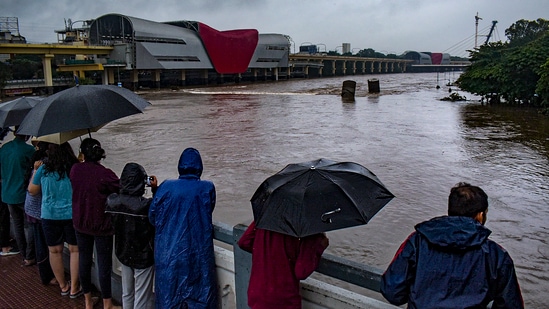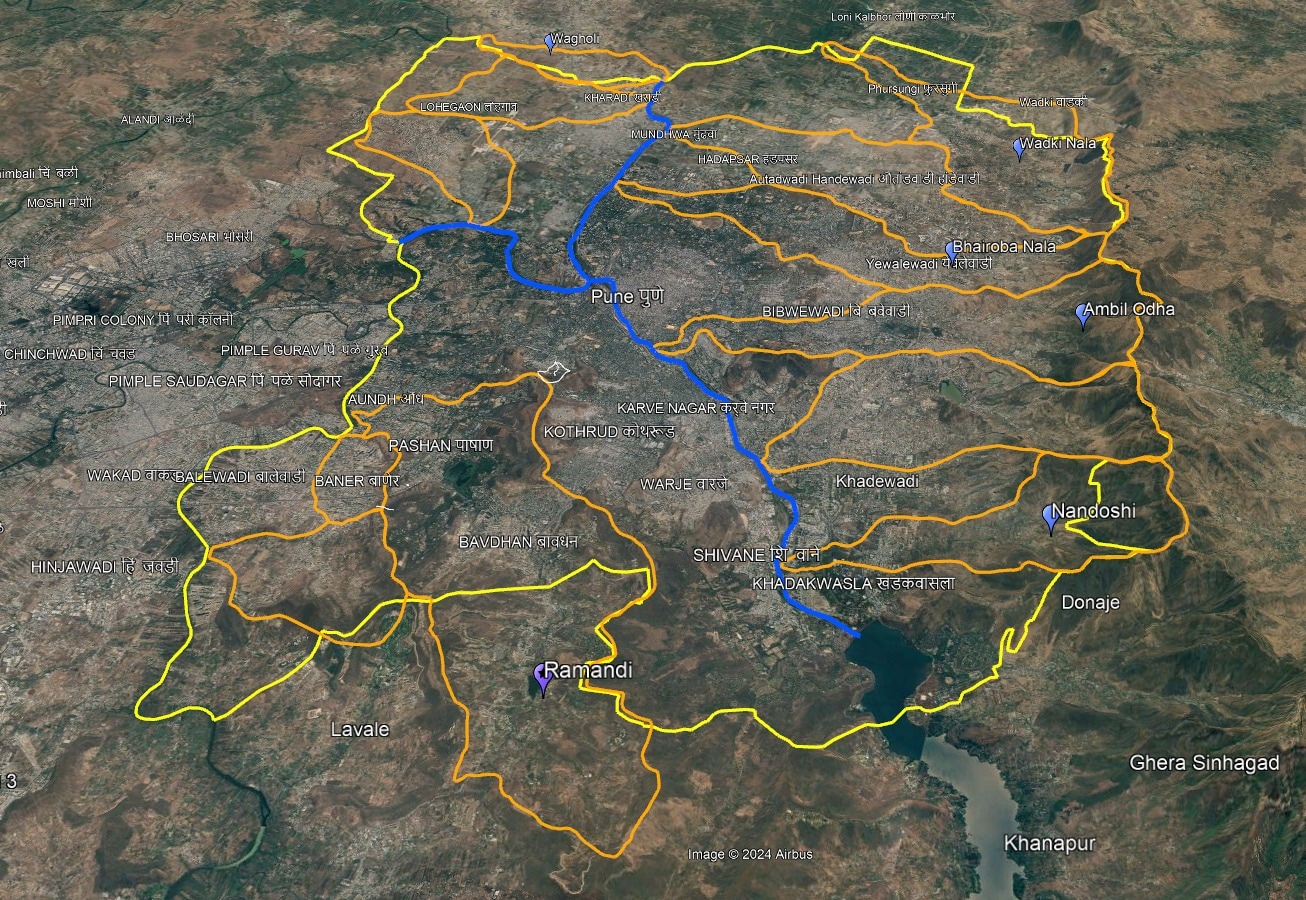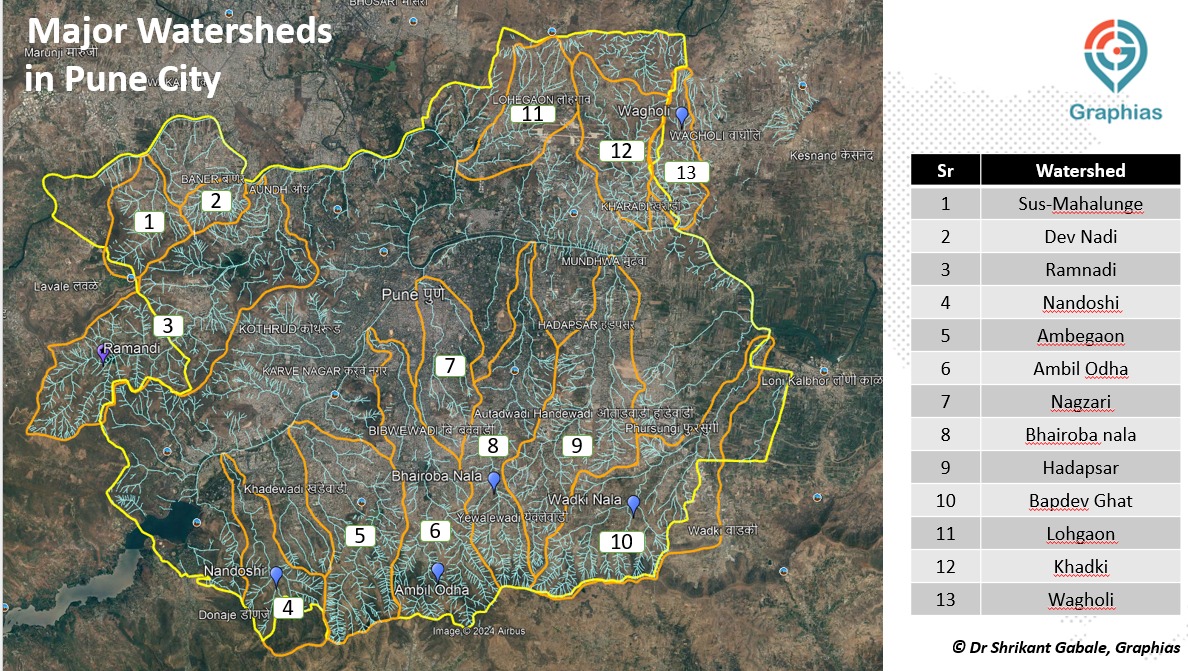Pune's struggle with floods: Urban expansion meets monsoon fury
Extreme weather events have become the new normal, revealing critical gaps in urban planning. Indian cities fall short of building resilient infrastructure
Intense rainfall in Pune this week not only led to massive flooding but also brought up concerns about the city's preparedness and infrastructure capabilities. The torrential downpour overwhelmed Pune's drainage systems and caused widescale disruptions.

The deluge in Pune resulted from incessant rainfall — both in the city and its catchment areas — and water releases from the Khadakwasla Dam. On July 25, authorities began releasing water at 1,000 cusecs to prevent overflow, which, coupled with saturated ground, led to severe downstream flooding. Political statements about government coordination forced a reactive stance from municipal authorities. Consequently, nearly 3,000 people were affected, with 574 relocated and five deaths reported so far.
“Multiple departments across the district are on alert and coordinating with district administration. Necessary warnings are being issued, and rescue operations are underway,” said Yogesh Mhase, commissioner, Pune Metropolitan Region Development Authority (PMRDA).
Areas such as Katraj, Balaji Nagar, Padmavati, Sahakarnagar, Kondwa, Fatima Nagar, Wanori, and Parvati were particularly hard hit, with basements and ground floors submerged. “We have deployed additional pumps for water suction, clearing blocked drainage systems, and removing encroachments from riverbeds and drainage lines to alleviate the immediate flooding issues,” said a Pune Municipal Corporation (PMC) disaster management official.
Heavy rains in ghats impact Pune
In the week preceding July 26, Pune district recorded 172% excess rainfall, with 156 mm of rain against the normal 57.4 mm. The monthly rain data till July 26 shows 98% excess rainfall, with 482.7 mm against the normal 243.7 mm, according to the India Meteorological Department (IMD). Ghat areas near Pune received nearly 500 mm of rain. "The ghats, experiencing extremely heavy rain affect downstream areas and dam catchment zones, contributing to severe waterlogging and flooding in Pune," said Sunil Kamble, regional director, IMD Mumbai.
Pune usually receives an average of 278 mm of rainfall in July, making it the wettest month of the year. The IMD issued an orange alert for Pune, with rainfall intensity expected to decrease by the end of the month. "The recent intense rainfall is due to an active offshore trough along the Maharashtra-Kerala coast and a low-pressure area over the northern Bay of Bengal, which have intensified monsoon activity. The strong westerlies and weakening cyclonic circulation in the Arabian Sea have further strengthened monsoon winds, leading to extremely heavy rains in the ghats and moderate to heavy rains over Pune city," Kamble added.
Underlying causes: Urban expansion and infrastructure strain
The topography and geomorphology of Pune, resembling a tea cup with watersheds from the Sahayadri range, add to the complexity of managing stormwater, say experts. Before 2012-13, the PMC area was 258 sq. km. Since then, 34 villages have been added, expanding it to approximately 552 sq. km.
“This rapid expansion has strained the existing infrastructure and administrative capacity, making it challenging to manage the increased area effectively,” said Shrikant Gabale, an urban geomorphology expert. “The administrative and infrastructure capacities that were sufficient for the earlier area are now inadequate. The officers, budget, and resources have not scaled proportionately, leading to significant challenges,” he added.
In June 2024, Pune identified 89 flood-prone areas, including key locations along the rivers and in several villages within the district.

The current stormwater drainage design needs reworking, as outlets are overwhelmed and inlets choked with waste, explained hydrogeologist Himanshu Kulkarni, scientist emeritus at ACWADAM. “The stormwater system is designed for average conditions, not worst-case scenarios. Narrow roads beside flyovers frequently flood due to excess water runoff,” he said.
According to Gabale's survey of India's toposheet, around 40% of 3,000 streams in Pune have disappeared over the last 25 to 30 years. “This significant loss of streams results in decreased water discharge pathways, causing further challenges in managing stormwater,” he said.
He explained that the drainage department designs stormwater systems but road projects often bypass these designs, leading to inefficient water management and increased flooding. "There is a need for interdepartmental coordination,” Gabale said. Currently, Pune uses cement for road development, which reflects heat and contributes to urban heat islands. “Tar roads, which absorb heat better, should be considered to mitigate this effect and improve stormwater absorption,” he added.
Impact of dam releases on Pune's flooding
The recent flooding in Pune has been worsened by uncoordinated and untimely releases from upstream dams. Himanshu Thakkar, coordinator of the South Asia Network on Dams, Rivers and People, said, "The uncoordinated releases from Khadakwasla have exacerbated flooding in Pune. Despite the proximity of these dams to the city, there is a lack of proactive management to prevent disasters. Suggesting that dams should not be filled beyond 50% post-disaster highlights the reactive nature of current policies."
Thakkar pointed out systemic issues in dam operations across India. "There is no systemic approach, and the Dam Safety Act fails to address operational issues. Dams can create disasters even without structural failures due to uncoordinated releases. We need accountable, transparent, and credible mechanisms for dam operations," he said.
The mismanagement of flood prevention measures compounds the problem. While dams theoretically reduce downstream flooding, the lack of proper operation and oversight nullifies these benefits. “The standard operating procedures and rule curves for dam operations are not public, and there is no inquiry into why dams are operated in certain ways during flood events,” he noted.
Riverfront development
The Pune Riverfront Development Project, particularly along the Mula-Mutha rivers, is a ₹4,727 crore initiative by the PMC to transform the city's riverbanks into public spaces. It involves constructing embankments, promenades, and recreational areas aimed at rejuvenating the riverfront and enhancing urban aesthetics.
Environmentalist Sarang Yadwadkar argues that the project and Pune’s flooding is more of a man-made disaster than a natural one. The impediments created in the riverbed, whether legal or illegal, contribute to flooding, he said. “The floodplains along Mula-Mutha rivers have been unscientifically identified, a point flagged by the Bombay high court in its order on June 26 calling for a fresh time-bound review of floodplains,” said Yadwadkar, a petitioner in the matter.
Most significantly, the riverfront development project is causing the largest obstruction, reducing the river's cross-section by about 45-50%. “This has led to severe flooding upstream of the Mula-Mutha. Three out of eleven stretches have already been impacted without proper environmental clearance,” said Yadwadkar.
Addressing encroachment and flood management
Encroachment on natural streams and stormwater paths significantly contributes to Pune's flooding. Unauthorised construction and reduced widths of nullahs hinder effective water management. "Encroachment on natural streams has led to a decrease in these vital water discharge pathways, causing further challenges in managing stormwater," said Gabale. Areas such as Ambil Odha, Ramnadi, Bhairoba Nala, Vadki Nala and Bapdev Ghat are affected.
Gabale said Pune's natural topography combined with the Sahayadri range's watersheds, creates a complex drainage system and is important for flood prevention. He highlighted that there are 13 identified urban watersheds in Pune. "The city's expansion and encroachment on natural streams and stormwater paths have reduced nullah widths, hindering water management. The stormwater infrastructure cannot handle the large volume, especially during intense rainfall events," he added.

The Unified Development Control and Promotion Regulations require permissions for altering streams, but unauthorised changes continue, leading to recurrent flooding. "Immediate action is needed to address these encroachments and restore natural water flow," added Gabale.
Strategies to combat Pune’s flooding
Pune needs open spaces and natural sponges for water absorption to combat flooding. An aquifer mapping study by ACWADAM shows less than 25% of the city has open spaces that coincide with natural recharge areas. “The excavation of aquifers and loss of soil have further reduced their soaking capacity, exacerbating the flooding problem,” said Kulkarni.
Thakkar highlighted the need for a systemic overhaul in dam operations to mitigate flooding risks. "All dam operations need to be reviewed, with rule curves made public and backed by legal frameworks to ensure proper operation. Accountability measures must address failures in dam management that contribute to flooding."
Improving stormwater management is another critical step. “A better stormwater drainage system, separate from the sewage system, is crucial. Many places in Pune have sewage mixing with stormwater drains, which needs to be addressed through proper desilting and maintenance," Thakkar added.
With a sanctioned budget of ₹97.94 crore for flood prevention under the urban flood management project, a PMC official said the focus is on long-term infrastructure improvements to mitigate chronic waterlogging and improve the city's resilience against extreme weather events.
As La Niña conditions are yet to set in, an extended monsoon is on the cards. With a minimum of another two months of rainfall expected, proactive measures, advanced planning, and a systemic approach are essential to managing Pune's flood problems effectively.
Continue reading with HT Premium Subscription






